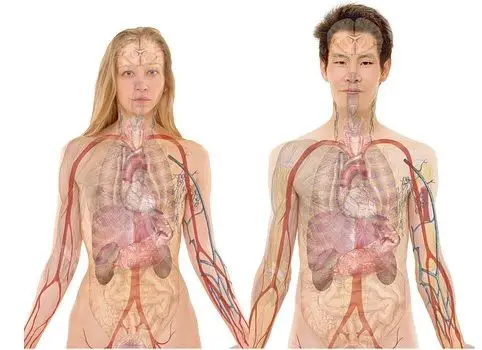The word ‘anatomy‘ means ‘structure‘, while ‘physiology‘ refers to ‘function‘. We can elaborate by saying that anatomy is the detailed study of different body parts, their organization, and their interrelationship, but how these body parts and organs play their specific role in a coordinated manner is termed as physiology.
An understanding of these terms is not only beneficial to health professionals and their career; instead, it helps us know about your own body and its wellness. Familiarity with the body (physiology and anatomy) of living beings make us aware of the healthful choices, and it also makes us aware of taking appropriate action against the signs arising during any illness.
The knowledge related to anatomy and physiology will also help in making you understand the information related to medical devices, various treatments, procedures, nutrition, and medications and of course the multiple infectious and genetic disease.
These subjects are studied together and are incomplete without each other. As understanding anatomy without knowing the physiology is worthless, vice versa is also true that knowing anatomy is critical before getting knowledge of physiology. So, in this article, we will provide an overview of anatomy as well as physiology and the points on which they differentiate.
Content: Anatomy Vs Physiology
Comparison Chart
| Basis for Comparison | Anatomy | Physiology |
|---|---|---|
| Meaning | Anatomy is the concept that deals with the study of structure like muscles, bones and interior organs of the body. It is the kind of static research. | Physiology is the concepts that deal with the study of functions of different organs like digestion, respiration, reproduction, osmoregulation, etc. It is considered to be a dynamic study. |
| Can be performed in | Anatomy can be analysed in dead as well as living beings. | Physiology is analysed in the living being only. |
| Deals with | Anatomy deals with the body's structure, different parts like cells, tissues, organs and organ system, etc. | Physiology deals with the working of the body's part and their specific roles. |
| Importance | The understanding of the anatomy of a living organism is vital to know about every part of the body. | The understanding of the physiology of a living organism is essential to know the function of every organ of the body. |
| Example | Anatomy of the heart means, the structure of the heart, its chambers, arteries, veins, the valves, etc. | Physiology means how the pumping of the blood is done by heart. |
Definition of Anatomy
Anatomy is the Greek word that means “to cut apart”. The scientific study of any living body’s structure is known as anatomy, while the study of the human body’s structure is known as Human anatomy. There are various types of structures, shapes, and sizes present in our body, few of them can be observed easily, while few are analyzed with the help of a microscope.
Human anatomy came into existence while observing the wounds and injuries of the soldiers and exterior of the bodies. Later on, the physicians were allowed to study and gain knowledge about human body structure by dissecting their dead bodies. For analyzing the body’s internal parts, it is dissected, and structures are cut apart, and then these parts are observed which also provide information that how they are interrelated and work in a coordinated manner.
Dissection is still performed in medical institution and in pathology labs, to study and observe every structure of the human body, however with the advancing technology numerous imaging techniques have been developed to analyze the internal structure. X-rays, CT Scan, Ultrasound, etc. are such techniques that allow clinicians or medical professionals to visualize the internal structures of the living body like fractured bones, internal injuries or cancerous tumour.
Anatomy is studied under two area of specialization: Macroscopic anatomy and Microscopic anatomy. Macroscopic anatomy is a study of such an arrangement of the body that is noticeable without the use of a microscope or any magnification. Microscopic anatomy includes the study of the cells (cytology), and tissue (histology) and other tiny or smaller structure that is only visible with the microscope or any different kind of magnification.
There are two conventional approaches to study the structure of the body: regional and systemic. Regional anatomy deals with the study of relationships between the different structures present in the specific region of the body like the abdomen. Regional anatomy helps us to understand how the cells, nerves, tissues, blood vessels and other structures function together with the target of serving the particular body area properly.
Systemic anatomy is the study of groups of structures that work together for performing the specialized function. For example, the study of the muscular system would include all the skeletal muscles of the body.
Definition of Physiology
The study of the organization of structures of the body and their working which counterpart other organs to function together with the aim of supporting the functions of life is known as physiology. The study of physiology focuses mainly on homeostasis, which is the ability to maintain constant internal condition by living things.
Physiology is the observations of pathologic conditions of the organs and its functioning. It deals with terms like cardiovascular, respiratory, urogenital, etc. Physiology has many subspecialties as it deals with all the critical process going within our body throughout life.
Key Differences Between Anatomy and Physiology
Following are the essential differences between the terms anatomy and physiology:
- Anatomy is the kind of static study that deals with the observation of internal as well as external structures of the body. Physiology is considered as the dynamic concepts that deal with the study of functions of different organs like digestion, respiration, reproduction, osmoregulation, etc.
- Anatomy can be analyzed in dead as well as living beings, but physiology is analyzed in the living being only.
- Anatomy deals with the body’s structure, different parts like cells, tissues, organs and organ system, etc., whereas physiology deals with the working of the body’s part and their specific roles.
- If we are discussing the anatomy of the heart, it means we are observing the structure of the heart, its chambers, arteries, veins, the valves, etc., while physiology oh heart means how the pumping of the blood is done by heart.
Conclusion
Anatomy and Physiology are closely related concepts that are studied together. In other words, anatomy is the analysis of an organism and how it is organized internally as well as externally, whereas physiology is how these organs function usually.



sal Kitundu says
I would like to learn more about human Anatomy and Physiology.
Ambika Ghimire Gyawali says
This article is very helpful to understand anatomy and physiology.
Arslan Ahmed says
After reading the article I understood that Anatomy and physiology are closely integrated both theoretically and practically
I found it interesting that anatomy can be performed both on living and non-living thing whereas physiology can only be done on the living things only.
Jose Urrutia says
This article provides a very good description and comparison between anatomy and physiology.
Natasha says
I didn’t realise that anatomy was analysed in both living and dead. After reading the article I found that there was some very interesting information that I have not heard about before.
Sunita Sharma Chapagain says
It is interesting to know that anatomy is analysed in both dead and living beings where as physiology is only analysed in living beings
Shraddha Pandey says
After reading the article i understood that Anatomy is the study of structures like muscles, bones and interior organs whereas Physiology is the study of functions of different organs like digestion, respiration, reproduction, etc.
Mandeep Kaur says
This article is really helpful to understand the difference between anatomy and physiology and therefore looking forward to know more about this topic
Thais Manzon says
The article was very helpful to understand the difference between Anatomy and Physiology. Also, understanding of these terms it is important for everyone as knowing our body well then we can be able to identify any illness.
Ganesh Pokhrel says
Very helpful and detailed differences between Anatomy and Physiology.
Tika k. Malla says
The article was so interesting. By reading article I understood that Anatomy is the study of internal and external structure of the body and physiology is the study of the functions of those structures.
Vaughn Saquing says
In this article, it helped me understand the differences between anatomy and physiology. It’s like anatomy is the individual parts of the machine and physiology is how a certain part functions to help the machine run as a whole. Though the two concepts are different, they are interlinked in regards to bodily function and helps us to understand it even more.
binaya says
Very helpful article. It clearly mentions what does anatomy and physiology means.
Navin Adhikari says
Anatomy is the study of human body parts which is done by dissection of living or dead body while Physiology is the study of how the different parts of living body/ organism functions.
Janet Woodhams says
Anatomy is the body parts and organs and how they’re made. Physiology is how they work/function.
Rita Gurung says
The article is very helpful to know that anatomy is the detailed study of internal and external structure of our body and physiology is the study of those structures and I also understood anatomy can be analyzed in dead as well as living beings, but physiology is analyzed in the living being only.
Rahul Shrestha Newar says
This article helps me to understand the differences and interrelationship between human anatomy and physiology and it’s key definition of anatomy as the structure of main body parts both internal and external and physiology as the function of those body parts in a systematic manner. Furthermore, through this article i am glad to know that the detail study of human anatomy can be done on both living and dead organism however, physiology study can only be done on living being.
Simran Gurung says
This article provides detailed differences between anatomy and physiology. Thank you!